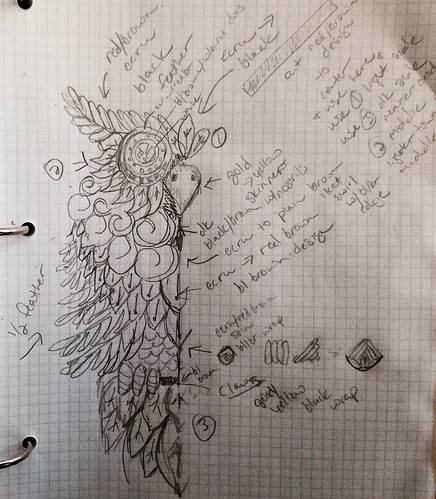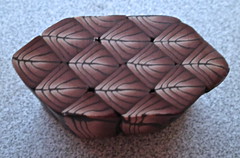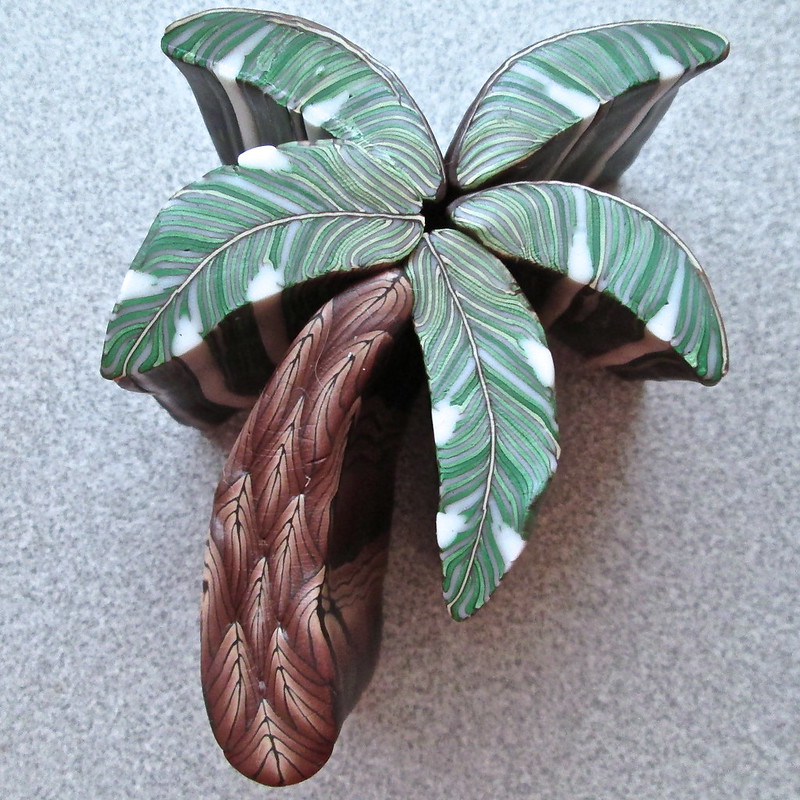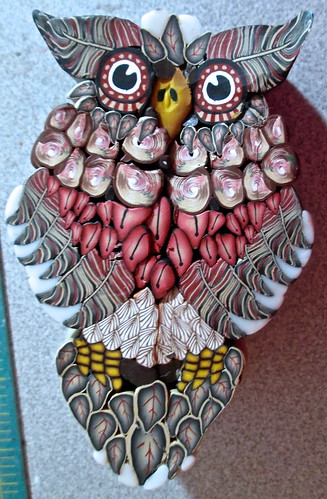
Everyone loves Owls! In designing this, I was going back to the basics I teach in my student art classes - to break down what you're drawing into simple components. Squares, circles, cones, rectangles - they all make up the building blocks of the complex images we view every day. So I thought, "hmm, how about looking at caning that way. Using your simple basic canes to make up larger components to give it detail." There many very simple canes used to make this very complex cane and it's helping me to think of other images that I can translate to clay in this manner. I feel like I've just started something. =) I was extremely tickled at the response on
Facebook and Elaine Robitaille even shared my cane
Craft Gossip yesterday! Thank you, everyone!
I started out with a sketch in a 8x10" gridded notebook which I keep for all my polymer designs. You can see my chicken scratches on my sketch below. lol I had an idea for colors and what the individual canes would look like.

Next I made some simple calculations using my drawing to determine how much clay I'd need for each cane. I'm currently writing up a detailed article on this process because it's extremely helpful in planning your cane and - with a few more calculations - determining how much you need to reduce your image size to get a small cane that's easier to reduce.
Building the individual canes that went into the larger cane came next. Here is a photo of all the canes. I used a feather cane, a shape-changing cane, a ikat swirl cane, and a couple of canes that were skinner blends with simple details cut into them. The eye was a bullseye cane with a sliver removed and replaced with white, surrounded by other details.

And finally the beak and claws were just a simple skinner blend with either nostrils cut in or wrapped in black and stacked. You can see how each was then reduced and laid into the design in my cane before reduction below. Now, the hard part - what to create with it? Any suggestions?
On a personal note - it's been a LONG month. I was hoping to get back to my blog within a week a moving, but plans change. I got sick with that nasty flu bug that's been hitting the Dallas area a few days before the move. I was getting better when Mountain Cedar rolled in and - though I've never had allergies of note - I was run down and it hit me hard. I'm still recovering from a sinus infection, a bit of bronchitis, and conjunctivitis in my eyes. Being sick has always a craft vacation for me, but I couldn't see clear enough to work, which makes Deb a very unhappy camper. I'm so glad to be on the mend!










